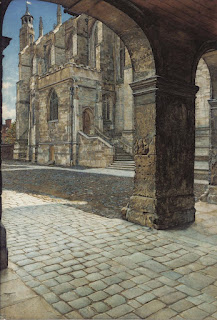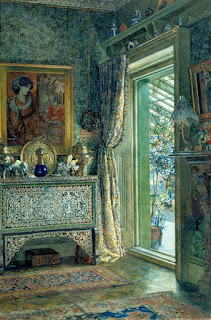When I was studying art in college, one of my classes was design. Our assignments had to be made from cardboard. It was fun and challenging, but I never considered using that material for sculptural art beyond the class.Recently, I saw the sculptures of Olivier Bertrand (1975-) and changed my mind.
It's a wonderful surprise to see artists using the most ubiquitous of materials with a creative eye to expanding possibilities. Bertrand certainly falls into that category... although he went about it in a most indirect way.
He graduated university with a Master's degree in Economics. From there, he moved into web designing. These were proven commercial professions. However, he had grown up fascinated by Origami and how simply folding paper could lead to a object.
Bertrand had a chance to reconsider his professional choices while he was convalescing. (Interesting how slowing down creates an opportunity to reconsider our life choices.) He remembered his interest in Origami and wanted to use a material that was light, easily available and sturdy enough to hold large sculptures. The answer was cardboard!Using heavy cardboard to provide a framework, Bertrand cuts pieces of various strength and thickness. He bends and layers the cardboard for the shaping of animals and humans.As he builds the sculptures, he does so keeping in mind how he must change an ephemeral medium into permanency. To that end, he covers his works with flame retardant and a epoxy resin to stiffen the cardboard.
Bertrand's fame has spread and he was invited to the Grand Palais in Paris, where he received a bronze award - a rare honor for a first-time exhibitor!





























